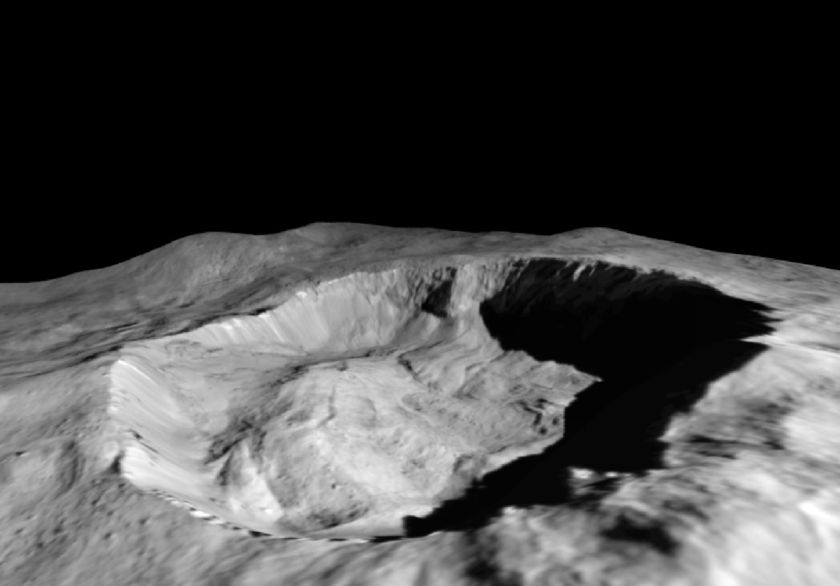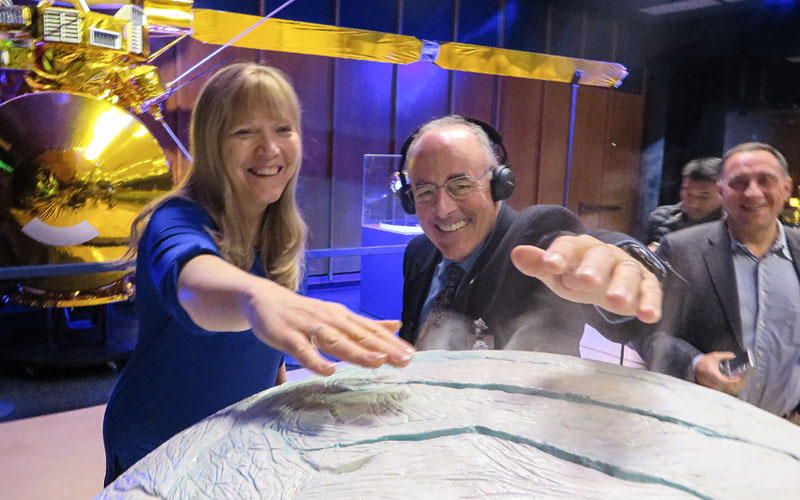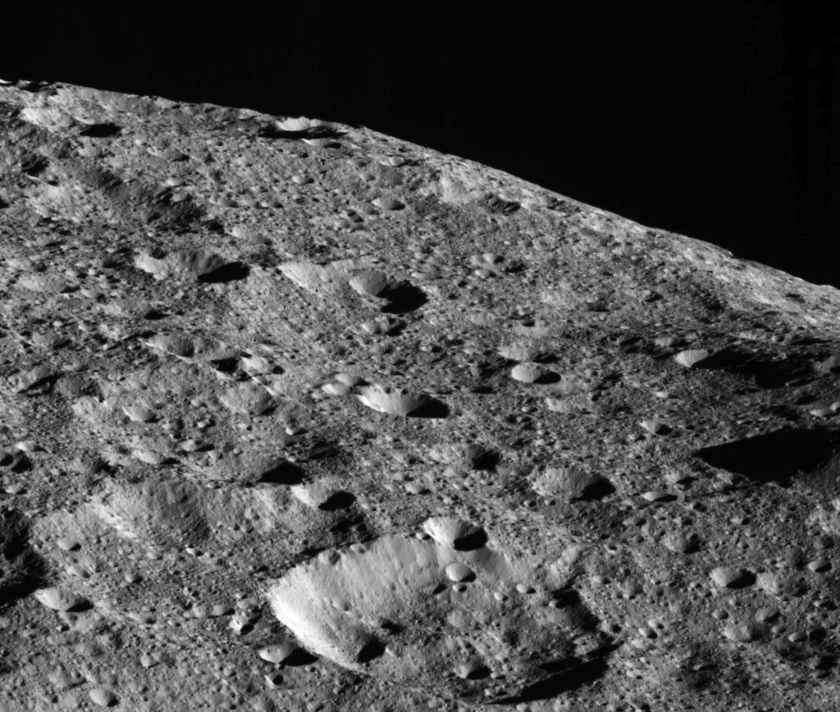Planetary Radio • July 4, 2018
On This Episode

Marc Rayman
Dawn Chief Engineer and Mission Director, Jet Propulsion Laboratory

Bruce Betts
Chief Scientist / LightSail Program Manager, The Planetary Society

Ceres is the queen of the asteroid belt. Her first Earthly visitor is nearing its last days in spectacular style. Dawn Mission Director and Chief Engineer Marc Rayman returns with stunning images taken from just 35 kilometers or 22 miles above the dwarf planet, and a preview of the spacecraft’s last days. Planetary Society Chief Scientist Bruce Betts has a summer guide to the night sky, looks back in space exploration history and delivers another Random Space Fact. He and Mat Kaplan also have a new space trivia question for listeners.

NASA/JPL-Caltech/UCLA/MPS/DLR/IDA
Occator Crater
This simulated perspective view shows Occator Crater, measuring 57 miles (92 kilometers) across and 2.5 miles (4 kilometers) deep, which contains the brightest area on Ceres. This region has been the subject of intense interest since Dawn's approach to the dwarf planet in early 2015. This view, which faces north, was made using images from Dawn's low-altitude mapping orbit, 240 miles (385 kilometers) above Ceres. The still-mysterious bright areas are now known to be sodium carbonate.
NASA/JPL-Caltech/UCLA/MPS/DLR/IDA/ASI/INAF
Juling Crater
This view from NASA's Dawn mission shows where ice has been detected in the northern wall of Ceres' Juling Crater, which is in almost permanent shadow. This simulated perspective view was made using images from Dawn's low-altitude mapping orbit, 240 miles (385 kilometers) above Ceres.Related Links:
This Week’s Prizes:
A svelte Planetary Radio t-shirt from the Planetary Society Chop Shop store. Also, a 200-point iTelescope.net astronomy account.
This week's question:
What did Yuri Gagarin eat in space?
To submit your answer:
Complete the contest entry form at http://planetary.org/radiocontest or write to us at [email protected] no later than Wednesday, July 11th at 8am Pacific Time. Be sure to include your name and mailing address.
Last week's question:
Why is the near-Earth asteroid Hayabusa2 is visiting named Ryugu?
Answer:
The answer will be revealed next week.
Question from the week before:
What is the International Space Station’s approximate altitude range above Earth’s surface? Unique or humorous units are welcome but won’t help you win.
Answer:
The International Space Station currently orbits about 400 kilometers or 240 miles above Earth’s surface.
Comments & Sharing
Let's Change the World
Become a member of The Planetary Society and together we will create the future of space exploration.

Support Planetary Radio
Keep our weekly radio program broadcasting online and on the air around the world.
Bagikan Berita Ini
















0 Response to "Dwarf Planet Ceres Thrills as a Dying Visitor Closes In"
Post a Comment